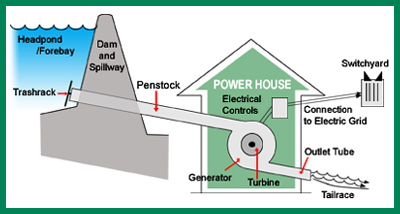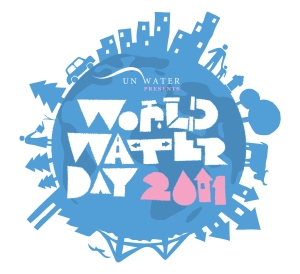The views expressed do not necessarily represent or reflect the views of BB&B.
It is a food for thought week!
Help for Japan:
Donate to the Red Cross – http://american.redcross.org/site/PageServer?pagename=ntld_main
Donate to Doctors without Boarders: http://www.doctorswithoutborders.org/donate/overview.cfm
What we are going to “chat” about today is LOW IMPACT HYDRO POWER.
It’s World Water Day!
The international observance of World Water Day is an initiative that grew out of the 1992 United Nations Conference on Environment and Development (UNCED) in Rio de Janeiro. This site started in 2001 as a community space and repository where people can upload their WWD event activities and reports. The theme changes every year. http://www.worldwaterday.org/ & http://www.unwater.org/worldwaterday/about.html
__________________________________________________________________________________
“Hydropower is energy obtained from flowing water. Hydroelectric power supplies about 19 percent of the world’s electricity and an estimated 10 percent of electric generating capacity in the United States via dams and turbines. Hydropower is normally applied to peak-load demand because it is so readily stopped and started.
Thousands of hydropower dams throughout the U.S. are located on many rivers and streams. These dams can create pollution-free energy, but they can also produce adverse impacts on fish, wildlife and other resources.” To read whole article http://www.greenpoweremc.com/lowimpacthydro.aspx

However, according to a Vermont Trout Unlimited Chapter President Clark Amadon ” New Hydro Power in the US is dead… because all the viable eco sites have been developed already.” Through Mr Amadon The Botanicals have learned about The Low Impact Hydropower Institute (LIHI), based in Portland Maine. On their website they state “LIHI’s mission is to reduce the impacts of hydropower dams through market incentives. LIHI does this through its Hydropower Certification Program, a voluntary certification program designed to help identify and reward hydropower dams that are minimizing their environmental impacts. Just as an organic label can help consumers choose the foods and farming practices they want to support, the LIHI certification program can help energy consumers choose the energy and hydropower practices they want to support.
In order to be certified by the Institute, a hydropower facility must meet criteria in the following eight areas:
- river flows,
- water quality,
- fish passage and protection,
- watershed protection
- threatened and endangered species protection,
- cultural resource protection,
- recreation, and
- facilities recommended for removal.”
Pretty cool stuff!
Now we all know that like all power sources, Hydro Power has some good things about it like these dams can create pollution-free energy …but that it also but… the dams can also produce significant adverse impacts on fish and wildlife and other resources.
and here is a news bite form Australia on the topic …from Geoff Strong is a Senior writer at The Age Article is from The Sydney Morning Herald. (smh.com.au)
“Last week, Australian scientist Lee Furlong, who has worked for the International Atomic Energy Agency, said of the Japanese crisis that part of the problem was that the industry there was entirely private. By contrast, in France, which gets 80 per cent of its power from nuclear, there is a high level of government control.
”The French are not frightened of government regulation – I think they still have the guillotine,” Furlong quipped.
To the free-market high priests of today, any suggestion of government regulation is a step backwards. As for the rest of us, keen to maintain an economy in which we have jobs and can afford to keep the lights on, we might need to step backwards in order to step forwards.” Read the whole article.


